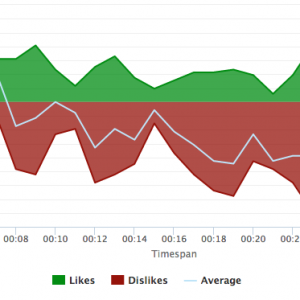A Comprehensive Analysis of Competitive Products

In a competitive market, businesses must keep their fingers on the pulse of their industry to stay ahead of the game. The key to doing so lies in conducting a thorough analysis of your competition. In this article, we will take a deep dive into the critical elements of competitive analysis to help you better understand the competitive landscape, evaluate key product features and benefits, determine pricing and profitability, and develop marketing and promotion strategies for your business.
Understanding the Competitive Landscape
Before you can effectively analyze your competitors, you must first identify who they are. This is a crucial step in developing a successful business strategy. Start by researching industry leaders, established businesses, and emerging players in your market. Use online tools and directories, business publications, and industry reports to gather information about their products, customer segments, and distribution channels.
It’s also important to consider the geographic scope of your competition. Are they local, regional, or national players? Understanding their reach and market presence will help you determine how to position your business in relation to theirs.
Next, you can evaluate the overall health of your industry by looking at market share and growth. Identify the market size and potential growth rates for your product or service, and research trends that may impact the industry as a whole. This will provide insight into potential opportunities and challenges that your business may face in the future.
For example, if you’re in the technology industry, you might want to research emerging technologies and their potential impact on your business. If you’re in the food and beverage industry, you might want to keep an eye on changing consumer preferences and dietary trends.
Identifying Key Competitors
Once you have a strong understanding of the competitive landscape, it’s time to identify the key players in your market. This step involves analyzing the strengths and weaknesses of your competition to determine who the major players are and what they bring to the table.
Consider factors such as pricing, product quality, customer service, and brand reputation. By understanding what your competitors are doing well, you can identify areas where you can differentiate yourself and gain a competitive advantage.
It’s also important to consider the size and scope of your competitors. Are they large corporations with significant resources, or smaller businesses with a more targeted approach? Understanding their strengths and weaknesses will help you develop a strategy that takes advantage of your own unique strengths.
Analyzing Market Share and Growth
In this phase, you must determine the size of your competition’s market share and how their business is growing. A few essential metrics to consider include revenue, profit margins, and customer retention rates.
Use this information to craft strategies to bolster your business and take a larger slice of the market share. For example, if you notice that your competitors have a strong online presence, you might want to invest in your own digital marketing efforts to increase your visibility and reach.
It’s also important to consider the potential for market disruption. Are there new entrants to the market that could pose a threat to your business? By staying aware of industry trends and potential disruptors, you can be better prepared to adapt and respond to changing market conditions.
Recognizing Industry Trends
Finally, it’s crucial to recognize trends and patterns that may impact your industry in the future. This information will help you adapt to changing market conditions and stay ahead of the curve in your business sector.
One trend that is currently impacting many industries is the shift toward sustainability and environmentally friendly practices. Consumers are increasingly concerned about the environmental impact of the products and services they use, and businesses that can demonstrate a commitment to sustainability may have a competitive advantage.
Other trends to keep an eye on include changing demographics, technological advancements, and shifts in consumer behavior. By staying informed and adapting to these trends, you can position your business for long-term success in a competitive marketplace.
Evaluating Product Features and Benefits
When it comes to grabbing the attention of potential customers, having a unique and valuable product is key. Your product must offer unique features and benefits that set it apart from the competition. In this section, we’ll explore how to evaluate core functionality, assess unique selling points, and analyze customer feedback to improve your product offering.
One way to evaluate your product’s core functionality is to compare it to the competition. Key features to evaluate include performance, reliability, usability, and scalability. By conducting a thorough analysis of your competition, you can identify areas where you may have a competitive advantage over other players in the market.
For example, if your product is a software application, you may want to compare its performance to that of other similar software applications. You can analyze customer reviews to see what users like and dislike about competing products, and seek out areas where you may have a competitive advantage.
Another way to set your product apart is by assessing your unique selling points. Examine your competition to identify what they are offering, and determine how your product can stand out. This may mean offering lower prices, more features, or exceptional customer service to attract and retain customers.
For instance, if your product is a fitness tracker, you may want to offer more features than your competitors, such as tracking sleep patterns or offering personalized workout suggestions. By identifying your unique selling points, you can create a marketing strategy that highlights these features to potential customers.
Finally, it’s essential to analyze customer feedback to improve your product offering. Analyze customer reviews, social media messages, or other feedback channels to see what customers like or dislike about competing products. Look for opportunities to address issues or offer new features that set you apart from the competition.
For example, if customers are complaining about the lack of a certain feature in your product, you can consider adding it in future updates. By listening to customer feedback, you can improve your product and create a loyal customer base.
In conclusion, evaluating product features and benefits is crucial to creating a successful product. By comparing core functionality, assessing unique selling points, and analyzing customer feedback, you can create a product that stands out in the market and meets the needs of your customers.
Pricing and Profitability Analysis
Pricing is a critical component of any competitive analysis. Your pricing strategy must balance the need to generate profit with the desire to remain competitive in your market. This section explores how to compare pricing strategies, evaluate profit margins, and analyze price sensitivity to help you develop a pricing strategy that works for your business.
When it comes to pricing, there are many factors to consider. You need to take into account your production costs, overhead expenses, and the value that your product or service provides to customers. Additionally, you need to consider the prices of your competitors and the overall state of the market.
Comparing Pricing Strategies
Start by comparing prices across your competition to determine the average price of products or services in your market. This will give you a baseline to work from when developing your own pricing strategy. You can then consider whether you want to charge more or less than the average cost to remain competitive.
However, it’s important to keep in mind that simply undercutting your competition may not be the best strategy. You need to ensure that your prices are still high enough to cover your costs and generate a profit.
Evaluating Profit Margins
Next, evaluate your profit margins. Determine your break-even point and assess how much profit you can make at various price points. This will help you determine the optimal price point for your product, taking into account the need to remain competitive while still generating profits that can sustain your business’s operations.
It’s important to remember that your profit margins may vary depending on the volume of sales. For example, you may be able to charge a lower price per unit if you can sell a large volume of products, which can increase your overall profits.
Assessing Price Elasticity and Sensitivity
Finally, assess your customer’s price sensitivity. Determine the value your customers perceive from your product and how changes in price may impact their purchasing decisions. Use this information to adjust your prices and remain competitive without sacrificing profits.
Price elasticity refers to the degree to which changes in price affect the demand for your product. If your product is highly elastic, a small change in price may result in a significant change in demand. On the other hand, if your product is inelastic, changes in price may have little impact on demand.
Understanding price elasticity can help you make informed decisions about your pricing strategy. For example, if your product is highly elastic, you may need to adjust your prices carefully to avoid losing customers. However, if your product is inelastic, you may have more flexibility to adjust your prices without impacting demand.
By taking the time to analyze your pricing strategy, you can develop a plan that balances the need to generate profits with the desire to remain competitive in your market. With the right strategy in place, you can set your business up for long-term success.
Marketing and Promotion Strategies
Effective marketing and promotion strategies are crucial to gaining and retaining customers. In this section, we’ll explore how to analyze and develop effective advertising and marketing campaigns, identify sales channels, and evaluate social media and influencer partnerships to drive growth for your business.
Analyzing Advertising and Marketing Campaigns
Start by analyzing your competitor’s advertising and marketing campaigns. Determine what channels they use and what messaging resonates with their target audience. Look for opportunities to differentiate your advertising approach to make your product stand out.
Identifying Effective Sales Channels
Next, identify effective sales channels. Determine which channels work best for your competition and determine the potential customer reach of each. Consider online distribution platforms and brick-and-mortar stores to market your product to a broader audience.
Evaluating Social Media and Influencer Partnerships
Finally, evaluate the impact of social media and influencer partnerships. Identify influencers in your industry that have a large following and a strong reputation. Consider partnering with them to increase your business’s exposure and reach.
Conclusion
Conducting a comprehensive competitive analysis is essential for any business seeking to stay ahead of the curve in today’s competitive market. From understanding the competitive landscape and evaluating product features to determining pricing and profitability and developing effective marketing strategies, a thorough analysis can drive long-term growth for your company. By following the guidance outlined in this article, you can gain a better understanding of your competition and develop strategies that set your business apart from the rest.







